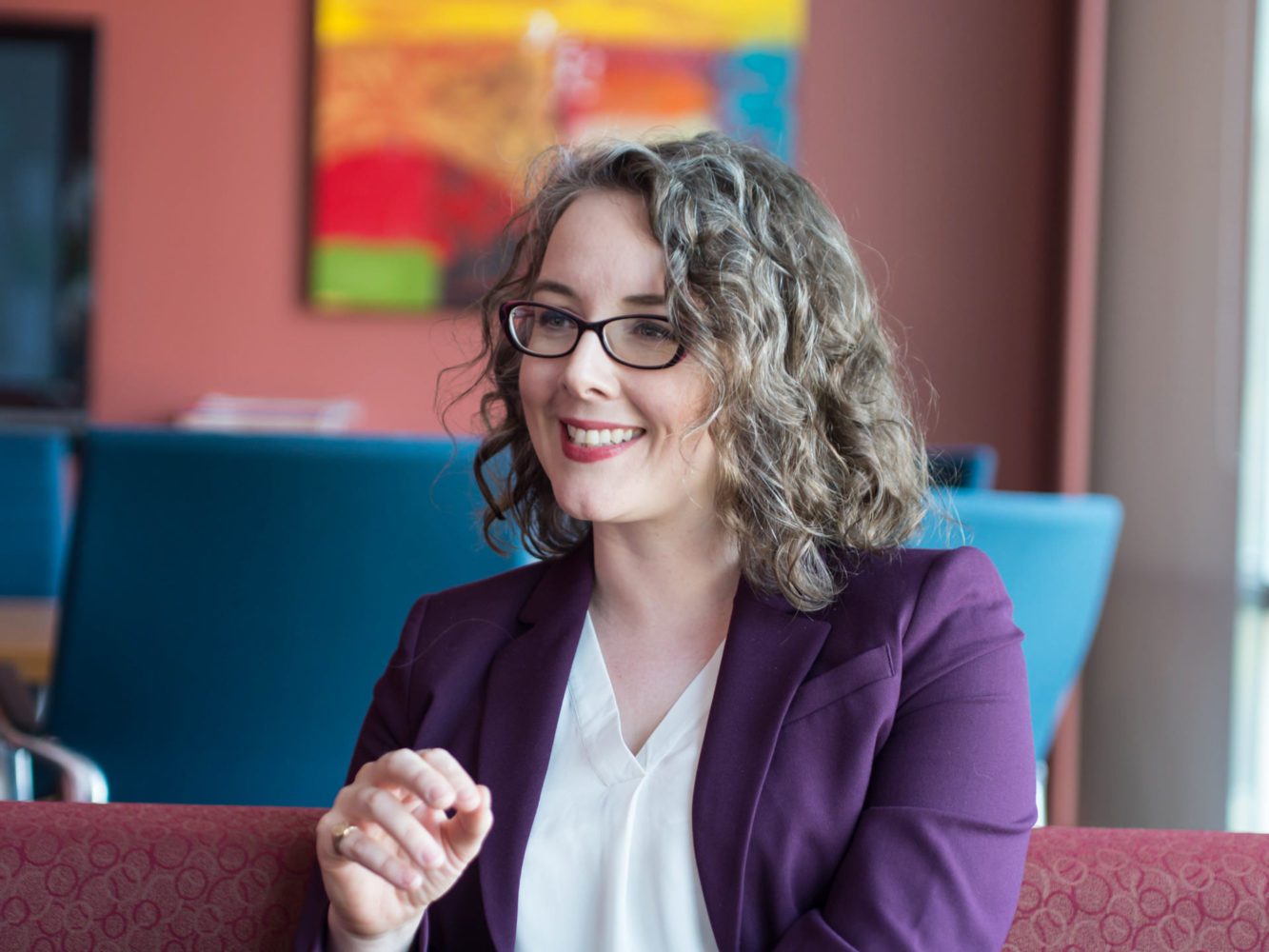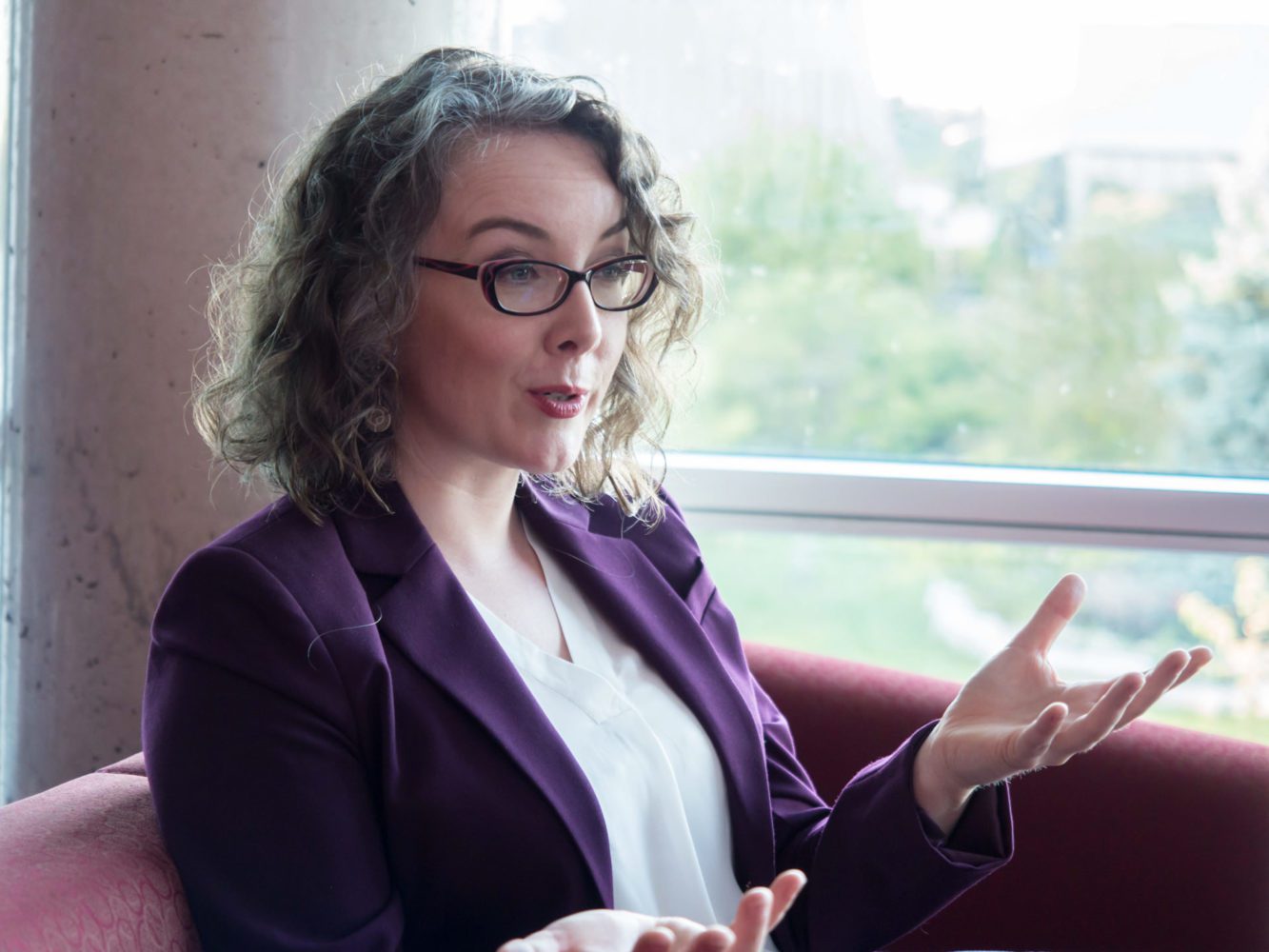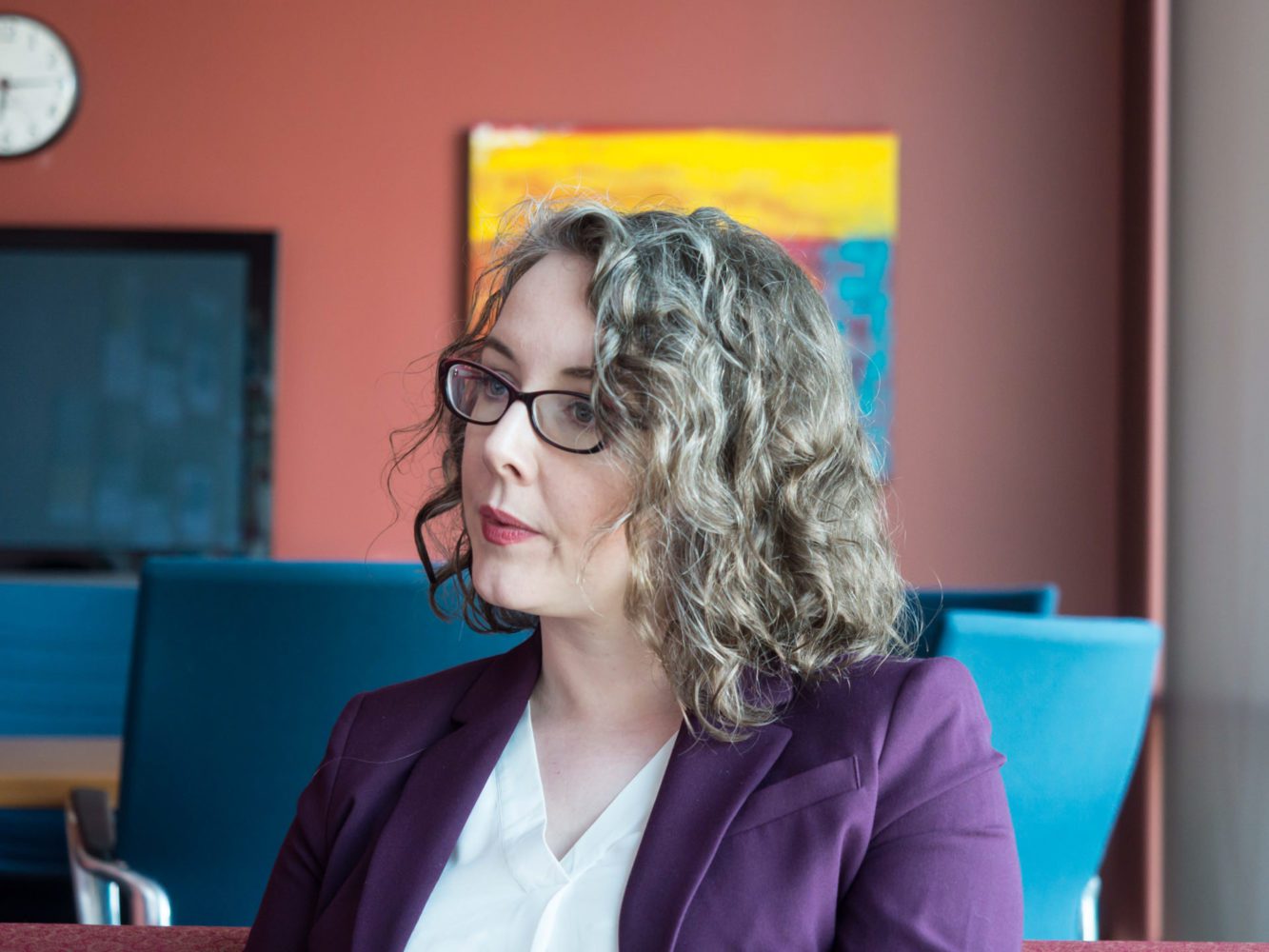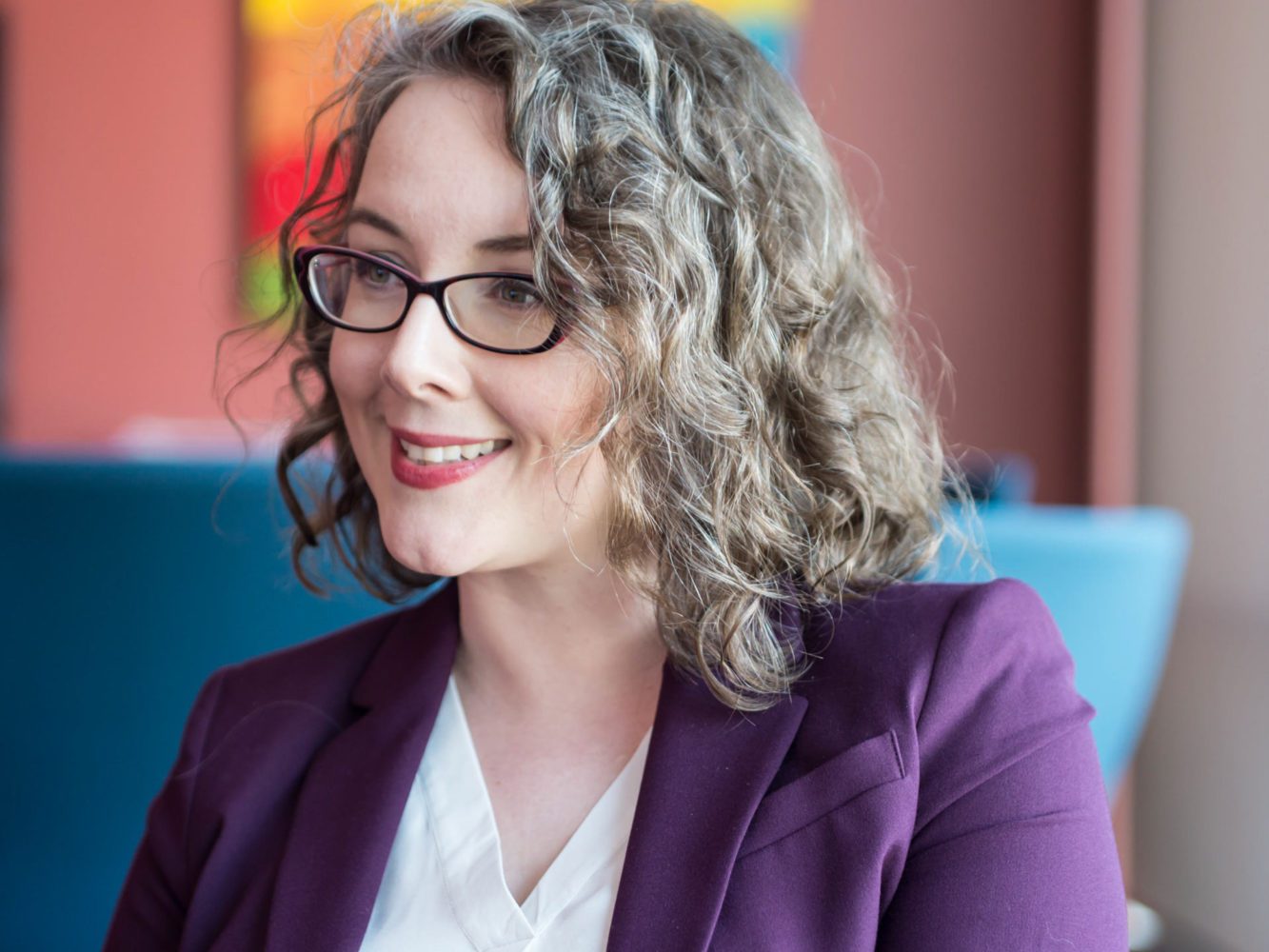As a health humanities professor, Andrea teaches university students and health care providers how to use the arts to think about illness, death, aging and healing. She explains how paintings, comics and fiction can build more empathy between providers and patients, and help nurses and doctors avoid burnout.
“There’s absolutely no doubt that in health care, as with society, ageism is one of the last acceptable isms. It manifests in all sorts of ways, including the language we use. The so-called “gray tsunami” describes older people as, barely metaphorically, a natural disaster and a burden on health care finances. One clinician who worked on a dementia ward once told me that a lot of her colleagues in medicine refer to the dementia floor as ‘the rock garden.’ Imagine speaking about people as inert objects because of their memory loss and the other effects of dementia. According to this language, they have lost any claim to personhood.”
“What struck me almost immediately when I began working with geriatricians was how much of the work they do is trying to change the narrative around what it means to grow old and the way older people are marginalized, not only within the healthcare system, but outside of it as well.”
They have a special relationship to the politics of elder care that I find really stimulating.

“I lived with my grandmother during the summers while I was an undergrad. She lived to be in her mid-90s; never ate vegetables and was convinced that was why she lived so long. To me, the success of her aging was not that she remained mobile until the very end of her life or that she more or less retained her sight. It’s that I never saw her throughout my life as an old woman, but as a person who I had a close relationship with who happened to be old.”
“When I was in high school, I played the trumpet in a small jazz band. We would often play at the Legion where there were many older people. Our set list consisted of songs from the 30s and 40s. They were not just a polite audience but they would dance! The music spoke to them. As a 16 or 17 year old, older people seemed very different than me, yet we were able to connect easily through music.”
I think the arts are a very powerful means of building a relationship with someone who may be very different from you.

“A number of years ago, some of us wondered how to make geriatrics and elder care more appealing to medical students. So, we looked at the impact of an inter-generational gala – an event where we paired medical students with older people from a local retirement home. Everyone got dressed up, they had conversations over dinner and there was dancing. We wanted to see whether this had any impact on the medical students’ perceptions of elder care, since one of the major problems facing geriatrics is recruitment. We found that it did change the students’ attitudes to growing older and increased their regard for geriatrics. The event provided them the opportunity to create relationships with older people that many had not had before. It was very difficult at the end of the evening to get the medical students out of there!”
“Most of the medical students had grandparents and older people that they loved. Why do you think this kind of event is necessary?”
“I think the ageism in our society is very powerful. I come back to language like the gray tsunami and the constant portrayal of aging as decline, loss and a burden. That messaging has been so successful that students are anxious not only about the impact of aging on the healthcare system, but about their own aging.”
You have to look far and wide for resources that support the idea of aging not as an illness or an affliction.
“In one of my seminars, I try to use arts to change that image. I am not trying to suggest that aging is great and awesome. But I am trying to highlight that aging is complex and full of benefits and disadvantages, like any other stage of life including youth, which is not immune from its own fears and anxieties.”

One of the criticisms of using the arts in health education that is very fair is: ‘Whose art, whose stories of illness, whose memories?’
“The arts are so powerful because they speak to individual experiences of illness. Many of my students are first or second generation Canadians. They identify as members of racialized or marginalized communities and have experiences of health and illness that reflect these realities. One of my commitments to my students is to use voices and experiences that speak to them. If we are not thinking about culture, then the arts have the potential to re-inscribe long standing colonial or racial biases. I do my very best to find Toronto-based art or experiences that are reflective of my students’ backgrounds. Students often come up to me and say, ‘I have this story, this resource, this film, from Bollywood’ for example, and that’s been a real opportunity to learn from my students.”

“I use this marvelous portrait by Gilbert Garcin called ‘A Work in Progress.’ It is a big picture of his own face that has a piece missing. With the title Work in Progress, it’s not clear whether the image is a positive story of aging — laying brick on brick with experience, or whether it’s a kind of diminution. I think it is likely both. We are probably always in a state of assembling ourselves and being disassembled. I like to communicate to students that this doesn’t just happen in older age. Think about all of ways in youth that pieces of one’s personhood are being accumulated and lost. I think the arts, with their commitment to nuance, ambiguity and complexity are very good at beginning to texturize how we think about aging and other conditions of health and illness.”
“I think my students get a sense that in turning to the arts and humanities, we are not in any way espousing an anti-science view. We need bio-medicine, there’s absolutely no question.”
But what goes missing in a biomedical, public health or even a sociological view, is the texture of the individualized experience of health. That’s what the arts and humanities are good at bringing to light.

“We just wrapped up a research project with pediatric rehabilitation nurses where they read a poem, short story or a comic that was relevant to their practice. A 10-line poem or a two-page comic can, in a very short time, give flesh to experiences that may be very different from one’s own perspective. This was followed by a discussion of the piece of art work and ended with some reflective writing. When we surveyed the nurses eight months later, we found the program helped prevent compassion fatigue and burnout, and enhanced empathy.”
The nurses talked about how the arts gave them a lasting resource that they could use to enhance their own resilience in a very challenging work environment.
“Stories can also validate our own complex lives and experiences; stories communicated through the arts can be a powerful reminder that we’re not alone, we’re not “the only one” who feels or thinks this way. The arts are a kind of technology for understanding the world — both outside and within ourselves — with more clarity and compassion.”
Andrea is the director of SCOPE: The Health Humanities Learning Lab, an online hub that explores human health and illness through the methods and materials of the creative arts and humanities.


The comments section is closed.